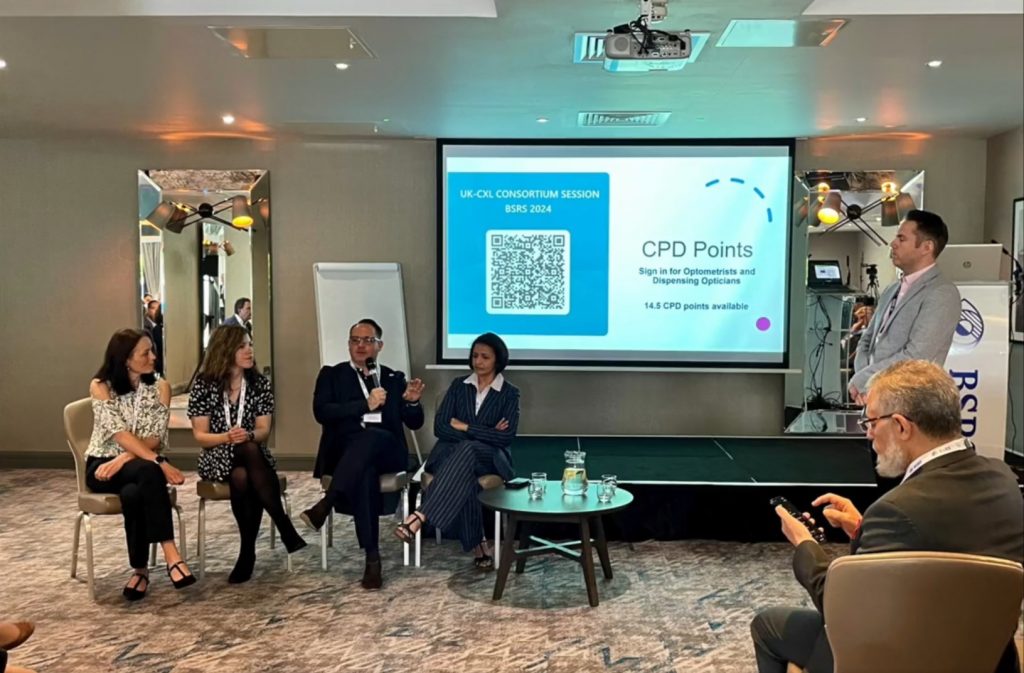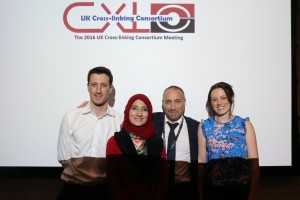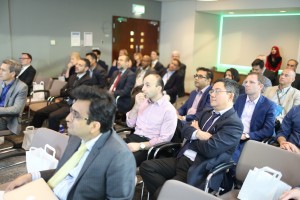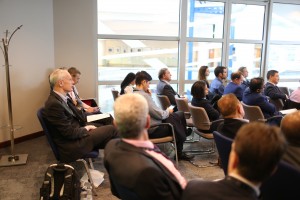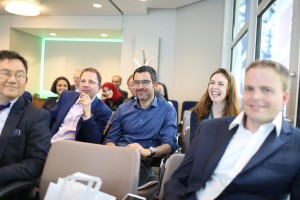The 2024 Joint British Society of Refractive Surgery and UK Cross-linking Consortium Meeting
Our first joint meeting with the British Society of Refractive Surgery took place in Leonardo Royal Oxford on 22-23rd June 2024 and was a huge success, with over 80 ophthalmologists, optometrists and vision scientists attending the UK Cross-linking Consortium session to hear about some of the latest advancements in corneal and scleral cross-linking and participate in lively discussions about the topic.
Our first speaker, Dr Siân Morgan from Cardiff University, presented experimental evidence on the impact of corneal rinsing and riboflavin replenishment during riboflavin/UVA cross-linking. In a series of ex vivo studies examining the resistance of corneal tissue following different cross-linking protocols, Dr Morgan showed that a brief rinse of the cornea prior to UVA exposure (to remove surface riboflavin) had no impact on cross-linking effectiveness. Similarly, the replenishment of riboflavin mid-way through a 9mW/10 min UVA exposure did not lead to any further enhancement in the enzymatic resistance of the cross-linked tissue. However, corneal rinsing and riboflavin replenishment were both shown to be beneficial in terms of maintaining tissue thickness during treatment. Click here to read the published findings of this study.
Although, cross-linking is known to stabilise most cases of progressive keratoconus (>90% of eyes), there is limited evidence for the treatment of choice when it fails. Our second speaker, Ms Seema Anand, addressed this issue in a presentation of clinical data from 10 years of repeat cross-linking for keratoconus at St James’s University Hospital (Leeds). Retrospective analysis of this data demonstrated repeat cross-linking to be a safe and effective treatment for cases of progressive keratoconus where primary cross-linking has failed. Click here to read the published findings of this study.
Our third speaker, Mr Mor Dickman from Utrecht University Medical Center in the Netherlands spoke about the development of a novel cross-linking therapy in which Near infra-red (NIR) photoactivation of water-soluble palladium bacteriochlorin 13′-(2-sulfoethyl)amide dipotassium salt (WST11) can be used to induce ocular tissue stiffening. The early-stage laboratory studies presented by Mr Dickman highlighted the potential use of WST11/NIR cross-linking as a safe and highly targeted approach for the prevention of myopic axial elongation.
Sadly, travel disruption prevented our final speaker, Prof Farhad Hafezi, attending the meeting to present his talk on PTK-assisted customised epi-on corneal cross-linking (PACE). Further information about this technique can be found on the ELZA Institute webpage.
Click here to read the meeting brochure and find out more about our invited speakers and their research.
The 2020 and 2021 UK-Cross-linking Consortium (UK CXL) Meetings
These meetings, destined to take place as part of the Royal College of Ophthalmologists Annual Congress, were cancelled due to the Covid-19 pandemic.
The 2016 UK-Cross-linking Consortium (UK CXL) Meeting
The UK Cross-linking Consortium meeting was held as a satellite meeting to the Royal College of Ophthalmologist Annual Congress in Birmingham ICC on 24th May 2016 and was well attended by over 40 ophthalmologists, optometrists and vision scientists. The programme covered many of the most important issues relating to cross-linking and concluded with a discussion about the future direction of the consortium. Click here to read the full meeting report.

